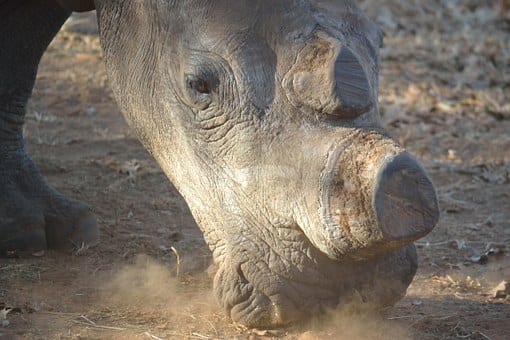Stephen O’Brien, a research scientist in the Halmos College of Natural Sciences and Oceanography, has worked with international colleagues from South Africa on a project created in 2010, to create a DNA database of rhinoceroses to help prosecute poachers who kill critically endangered black rhinos and nearly threatened white rhinos for their horns.
Rhino poaching or “dehorning” has seen a rapid rise in recent years due to an increased demand for rhino horns in Southeast Asia.
“Today between 1,000 and 1,200 [rhinos] are poached in South Africa each year,” said O’Brien.
Save the Rhino, a conservation initiative, stated that in countries like Vietnam, these horns are believed to have medicinal purposes to cure disease and ailments, a status symbol of wealth and are collected simply as trophies. With such a high demand and an incredible price tag — just one kilogram of horn could be the same price as gold — poachers near and far are ready to cash in.
In airports, international markets or even some areas of Africa, anti-poaching teams have been able to confiscate these horns but, according to O’Brien, authorities couldn’t prove where the specimens came from and in some cases, couldn’t confirm if they were actually rhino horns. Cindy Harper, a veterinarian and genetic specialist with the University of Pretoria in South Africa, created RhODIS in 2010, a Rhino DNA Index System which resembles CODIS, the U.S. FBI’s criminal DNA database.
According to University of Pretoria’s website, DNA samples of rhinos across Africa are collected in the database to create unique profiles of individual rhinos. The goal is for all rhinos to be on the system, living or dead, which will deter future poachers and assist in forensic prosecutions of accused poachers in the courts.
This project is a diverse collaboration with experts from the University of Pretoria’s Veterinary Genetics Lab, St. Petersburg State University’s Theodosius Dobzhansky Center for Genome Bioinformatics and African wildlife enforcement units along with South African National Parks (SANParks).
A major part of this project is going into the field and collecting samples for the database. SANPark Rangers and the Forensic Science Lab of the South African Police Services are trained to use RhODIS collection kits in conjunction with an iPad connected to eRhODIS to use samples as a chain of evidence in these investigations. This field version of RhODIS, eRhoDIS, is linked to the main server and transmits new data samples. These samples are taken from live rhinos within the parks, crime scenes of dead rhinos and DNA from confiscated horns suspected to be rhino. These DNA samples can be used to identify the species, population or geographical area and each specimen’s specific genotype.
“The hope is when they catch an individual that’s suspected of poaching, [RhODIS] will have clear, conditioned data to present to a judge and jury to have a confident conviction of an individual involved in these heinous crimes,” said O’Brien.
In 2010, the first court case in which RhODIS was utilized resulted in a Vietnamese citizen being sentenced to 10 years in prison for rhino horns in his baggage at the OR Thambo International Airport. As stated in an article on Phys.org, RhODIS has been used in more than 5,800 forensic cases with links between recovered horns, blood-stained evidence and specific rhino carcasses in more than 120 court cases.
O’Brien hopes that the publicity of these cases, education of the public and the future use of RhODIS will help protect and possibly save these endangered species from extinction.
On Jan. 8, collaborators involved in this project including Harper and O’Brien, printed their research in an article in Current Biology titled, “Robust forensic matching of confiscated horns to individual poached African rhinoceros.” This article can be accessed via the Alvin Sherman Library database.
O’Brien will present his work on this project on March 30 at the Center for Collaborative Research.


